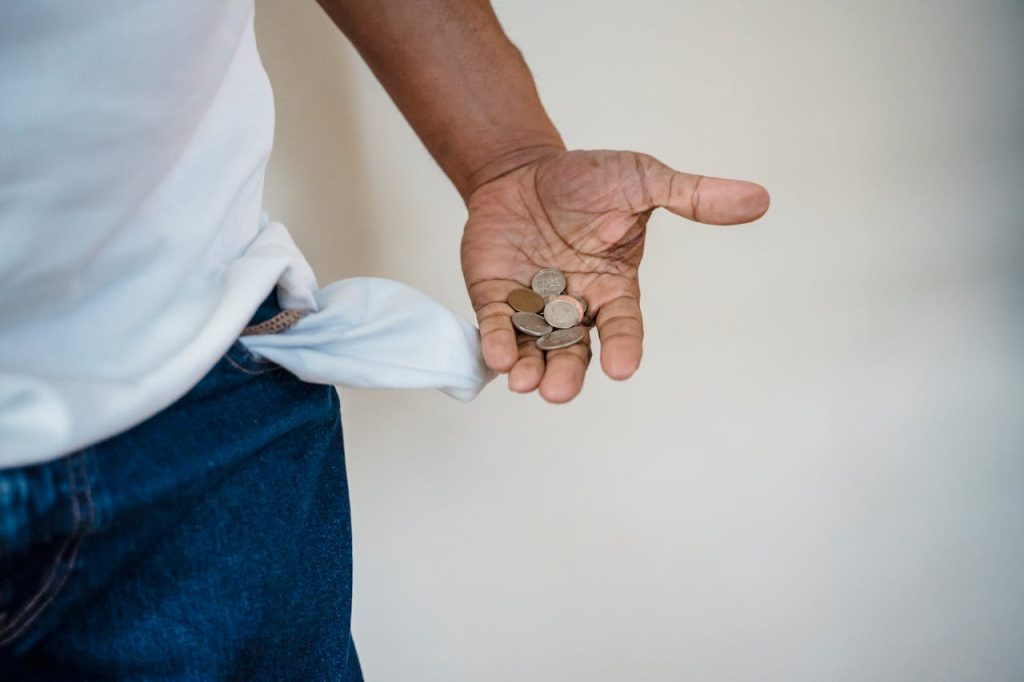Let’s be honest—how many times have you counted the days to payday, holding on to your last few pesos and wishing they’d somehow stretch?
Or maybe you’ve told yourself, “Next month na lang ako mag-start mag-ipon,” only to see your wallet run dry faster than expected.
Welcome to “Petsa de Peligro”—that oh-so-familiar feeling when money is tight, and payday feels forever away.
If you’re ready to break out of this cycle (and who wouldn’t be?), it’s time to try something simple yet life-changing: the 50-30-20 rule.
Think of it as a super easy way to manage your money without giving up everything you enjoy.
With this budget, you can enjoy life now while also building a solid future—no more “Petsa de Peligro” panic at the end of each month!
In this guide, we’re going to explore how the 50-30-20 budget works, why it’s so easy to follow, and exactly how it can help you get rid of that end-of-the-month stress.
By the end, you’ll feel more in control and maybe even a bit excited about managing your money.
So, are you ready? Let’s kick that monthly struggle to the curb and start building a life where you’re in charge.
Understanding ‘Petsa de Peligro’

If you’re living in the Philippines, you know exactly what “Petsa de Peligro” means.
It’s that tough time of the month when payday seems out of reach, and you’re counting every last peso to make it through.
This happens when we’ve either spent more than we planned or didn’t get a chance to save in the first place.
Many of us find ourselves in this cycle, where the beginning of the month feels great, but by the last week, we’re pinching pennies just to get by.
For young professionals, students, and new graduates, Petsa de Peligro is all too familiar.
And while it’s common, it doesn’t have to be a way of life.
That’s where the 50-30-20 budgeting rule comes in. It’s designed to help you take control of your finances by giving every peso a purpose.
READ: Payday Planning: A Simple Guide to Budgeting
Why 50-30-20 Works
The 50-30-20 rule is a straightforward way to split your income so you can cover your needs, enjoy a few wants, and still set aside savings for the future.
It works because it’s easy to remember, and it gives you a balanced approach to spending.
Here’s the basic breakdown:
-
50% for Needs
This is your “must-pay” money. It covers essentials like rent, groceries, transportation, utilities, and other necessary expenses.
-
30% for Wants
This part of your budget is for the things you enjoy but don’t necessarily need—like dining out, online shopping, streaming subscriptions, or that milk tea habit.
-
20% for Savings and Debt
This part is crucial for your future. It covers savings, investments, and debt repayments.
By using this rule, you make sure you’re covered on all fronts without having to worry about going broke before payday.
Here’s a closer look at each category with practical examples.
Step-by-Step Guide to Start 50-30-20 Budgeting

Let’s break down how to get started with 50-30-20 budgeting.
This may seem overwhelming at first, but taking it one step at a time will help.
Step 1: Calculate Your Monthly Income
Your starting point is your monthly income.
If you’re an employee, this is likely your net salary (the amount you take home after taxes and deductions).
If you freelance or earn variable income, try calculating your average monthly income from the past few months.
- Example: Let’s say you earn PHP 20,000 a month after deductions. That’s your base for the 50-30-20 split.
Step 2: Divide Your Income by the 50-30-20 Rule
Now, apply the percentages to your income:
- 50% for Needs: PHP 10,000 (for essentials)
- 30% for Wants: PHP 6,000 (for the fun stuff)
- 20% for Savings/Debt: PHP 4,000 (for future planning)
Step 3: List Your Expenses in Each Category
Start by listing out your regular expenses to see where your money goes.
Some expenses, like rent or groceries, are fixed. Others, like dining out or online shopping, can vary.
- Needs: Rent, groceries, bills (water, electricity, internet), transportation, basic healthcare.
- Wants: Dining out, shopping, entertainment subscriptions, coffee or milk tea.
- Savings/Debt: Emergency fund, investment accounts, SSS/GSIS voluntary contributions, or debt repayments.
If you’re new to budgeting, tracking every peso might seem challenging. A simple spreadsheet, app, or even a notebook can help keep track of your daily expenses until you get the hang of it.
You can download our free budget templates to get started.
Tips to Stick to Your Budget Without Feeling Miserable
Sticking to a budget doesn’t mean saying goodbye to fun.
Here are some tips to help you enjoy life while staying on track:
- Prioritize Experiences Over Things: Instead of spending on stuff that loses its value, like clothes or gadgets, focus on experiences that are meaningful but don’t break the bank. Beach trips, movie nights with friends, or even weekend hikes are affordable options.
- Try DIY Days: Instead of constantly eating out, try cooking at home a few nights a week. Not only does it save money, but it can also be a fun way to experiment with new recipes. A simple dinner you’d usually order for PHP 300 can be made for around PHP 100 at home.
- Limit Your ‘Wants’ Category to Specific Days: Set certain days when you’ll allow yourself to spend on “wants.” For example, treat yourself to one milk tea a week, or limit shopping to a monthly spree instead of making impulse buys.
- Use Cash for Daily Expenses: When you have physical cash, it’s easier to see how much you’re spending. Take out your “wants” budget in cash each week, so you’ll know when it’s gone.
Common Challenges with the 50-30-20 Rule (and How to Overcome Them)

While the 50-30-20 rule is simple and effective, it’s not always easy to stick to, especially when life throws us curveballs.
Here are some common obstacles Filipinos face when following this rule and how you can overcome them:
Challenge 1: My Income Isn’t Enough to Cover 50% for Needs
Many people find that their essential expenses exceed 50% of their income, especially if they’re living in cities with a high cost of living, supporting family members, or dealing with debt.
Solution:
If 50% for needs feels impossible, consider adjusting your budget slightly to match your reality.
You might do a 60-20-20 split for a while, where 60% goes to needs, 20% to wants, and 20% to savings.
While not ideal, it still helps you save consistently without feeling like you’re falling behind.
Cutting Costs Gradually:
Look for small areas to trim. For instance, if your grocery bill is high, try cooking in bulk or making meal plans.
If transportation costs eat up your budget, consider carpooling or using public transit.
Challenge 2: Social Pressure and FOMO (Fear of Missing Out)
Living in a connected world, we often feel the need to keep up with friends, whether it’s eating out, going on trips, or buying the latest gadgets.
Social media can make this even harder when you’re constantly seeing everyone else’s highlight reel.
Solution:
Find affordable ways to have fun without breaking your budget.
Instead of saying “no” to every invitation, suggest budget-friendly activities, like potluck dinners, movie nights at home, or park picnics.
Your friends might even appreciate the suggestion!
You could also limit your screen time on social media if it makes it harder to stick to your goals.
Challenge 3: Irregular or Variable Income
Freelancers, business owners, and gig workers know that income can fluctuate from month to month, making it challenging to set a fixed budget.
Solution:
Try using your lowest monthly income as your base. Calculate the 50-30-20 rule on this amount, so even in lean months, you’re prepared.
When you earn more, prioritize putting the extra income towards savings and debt.
Consider creating a buffer fund for months when income dips—aim for one or two months of expenses set aside to cover any income gaps.
Challenge 4: Unexpected Expenses
Sometimes life throws unexpected expenses our way, like medical bills, car repairs, or family emergencies. These can derail even the best-laid budgets.
Solution:
This is where the 20% savings portion really matters!
Try to build an emergency fund that covers at least three months of expenses.
Start small if that feels overwhelming—even ₱1,000 per month adds up over time.
In the meantime, if an emergency does happen, consider negotiating payment terms or seeking financial help from family if necessary, and prioritize rebuilding your emergency fund as soon as you can.
READ: Rainy Days Don’t Wait: Why Every Filipino Needs an Emergency Fund Now
Challenge 5: Difficulty Distinguishing Wants from Needs
Sometimes it’s hard to know what truly qualifies as a need versus a want.
For instance, a data plan might feel essential, but is that 200GB plan really necessary?
Solution:
When in doubt, ask yourself: “Can I get by without this, or is there a cheaper option?”
Many wants can feel like needs because we’re used to them, but a little honesty goes a long way.
Look for ways to get what you need without overspending. For example, a basic data plan might do just fine if you have access to Wi-Fi in most places.
Additional Tips to Make the 50-30-20 Rule Work for You

Here are a few extra tips to help you succeed with the 50-30-20 rule and create a financial life you can feel good about.
Automate Your Savings
Set up an automatic transfer from your payroll account to a savings or investment account.
This way, you’re paying yourself first, and it reduces the temptation to spend that money.
Even if it’s a small amount, consistent savings make a difference over time.
Use “Sinking Funds” for Future Expenses
A sinking fund is like a mini-savings for specific, expected expenses, such as holiday spending, birthdays, or school fees.
Every month, set aside a small amount in a separate fund, so when the time comes, you’re prepared without tapping into your monthly budget.
READ: No Spend November: How to Save Big Now So You Can Spend Guilt-Free in December
Give Yourself Some Grace
No budget is perfect, and you don’t have to get it right every month.
Some months may be more challenging than others due to unexpected expenses or social events.
Remember, budgeting is a habit, not a punishment. If you slip up, just reset next month. It’s okay to make adjustments as your financial situation changes.
Long-Term Benefits of 50-30-20 Budgeting
Breaking free from “Petsa de Peligro” isn’t just about today. Using the 50-30-20 rule has some big benefits in the long run:
- Peace of Mind: With this budget, you’ll know that all your needs are covered first, so you won’t have to worry about surprise bills eating into your fun money.
- Savings for the Future: Whether it’s an emergency fund, investments, or a simple savings account, setting aside 20% of your income gives you a cushion for life’s uncertainties and helps you achieve your goals.
- Less Financial Stress: As you start building better money habits, you’ll feel more in control and less stressed about making ends meet.
- Freedom to Enjoy Life: By balancing needs and wants, you get to enjoy life now without sacrificing your future.
Final Thoughts
Budgeting isn’t always easy, and the 50-30-20 rule might take some practice to get it right.
But if you start small, stay patient, and make adjustments along the way, you’ll find yourself breaking free from the cycle of Petsa de Peligro once and for all.
So, how about giving it a shot?
Start by jotting down your income and expenses today, and see where you can make that 50-30-20 split work for you.
And remember—every step you take is progress, even if it’s just a small one.
Don’t hesitate to share your progress or ask questions in the comments below.
Here’s to taking control, breaking free, and building a future where you’re not just surviving, but thriving!


